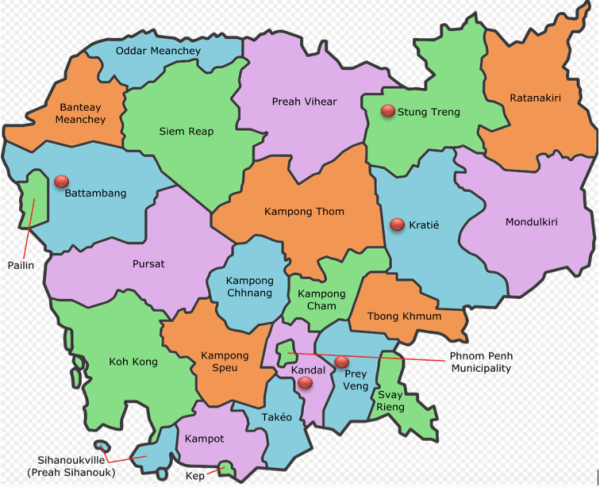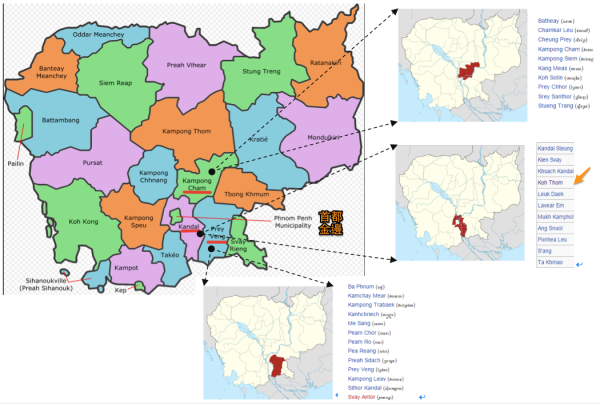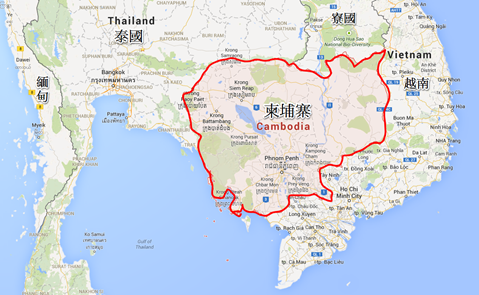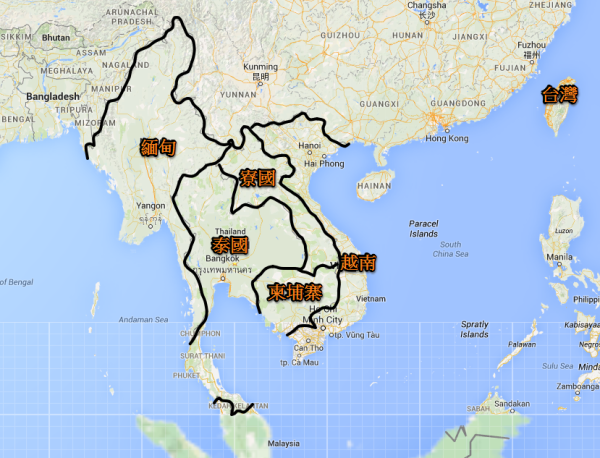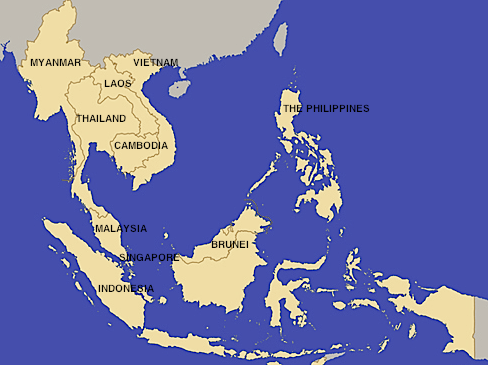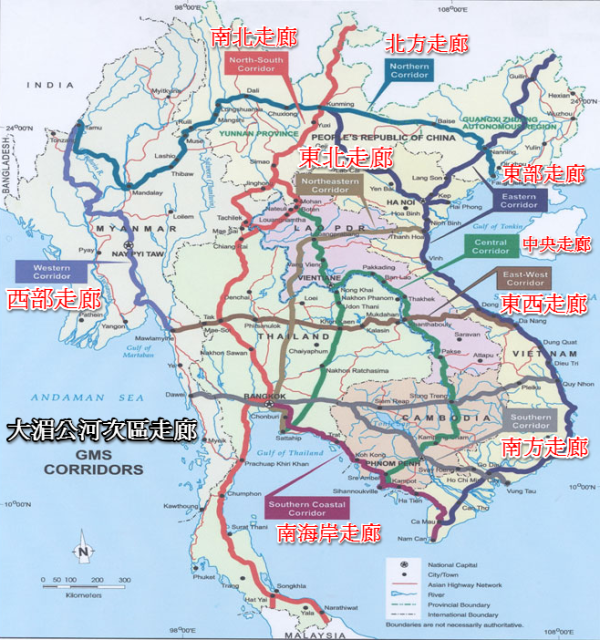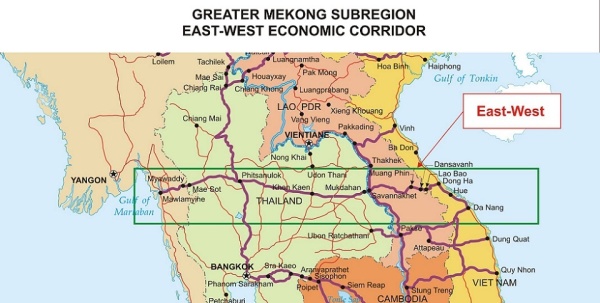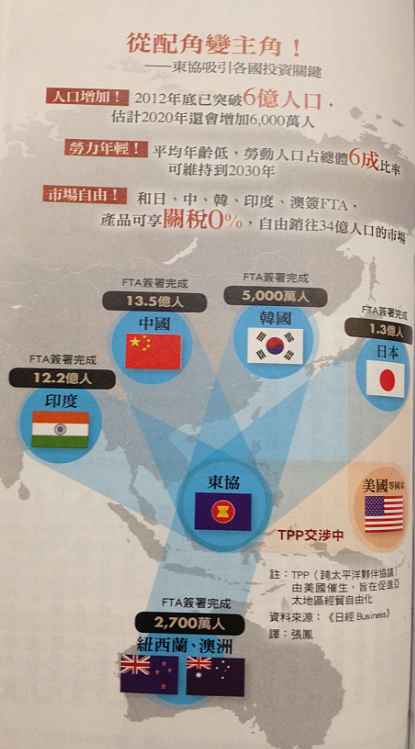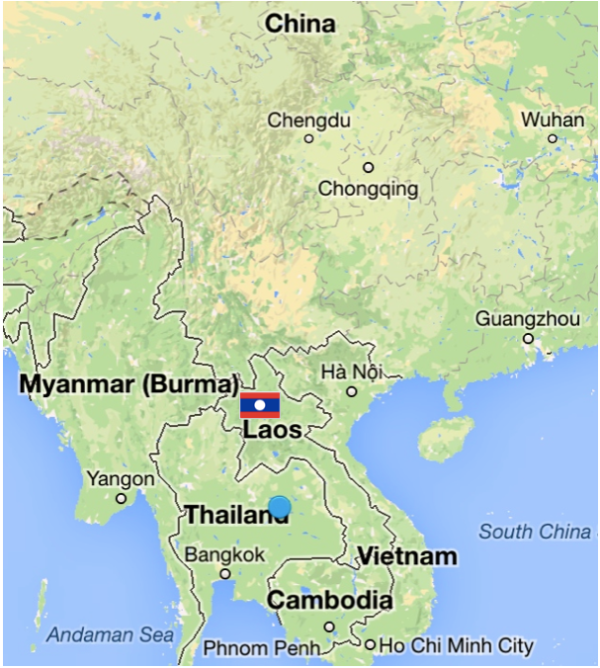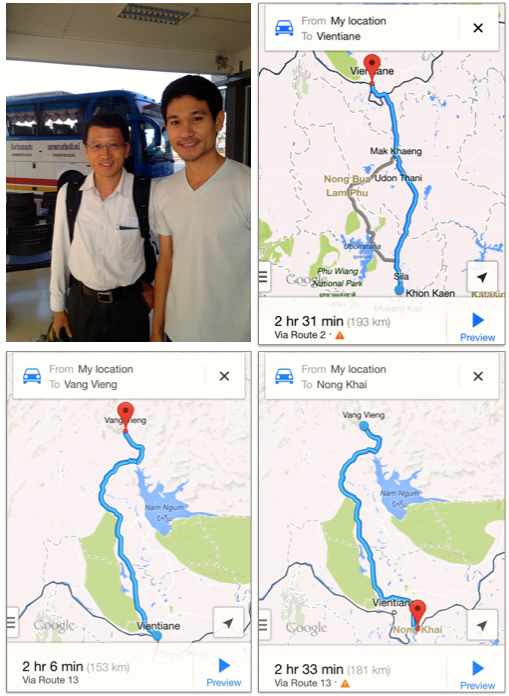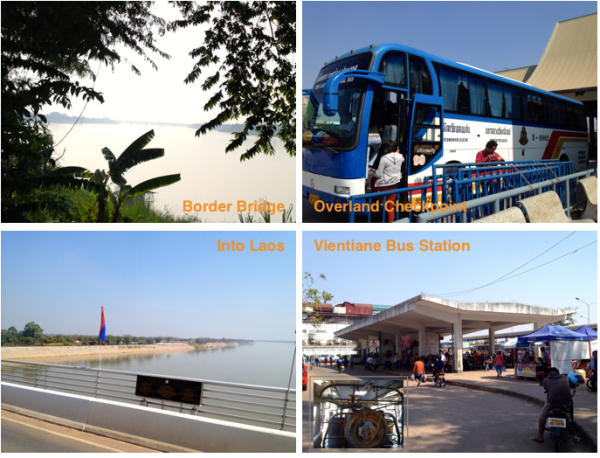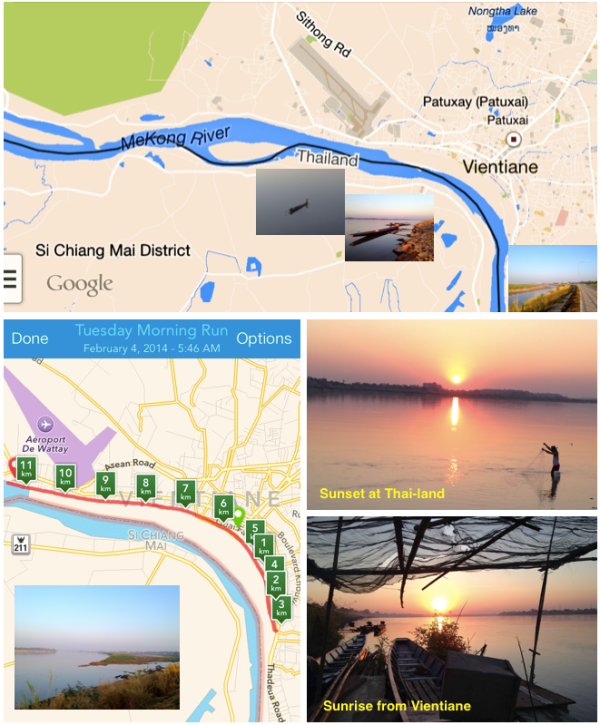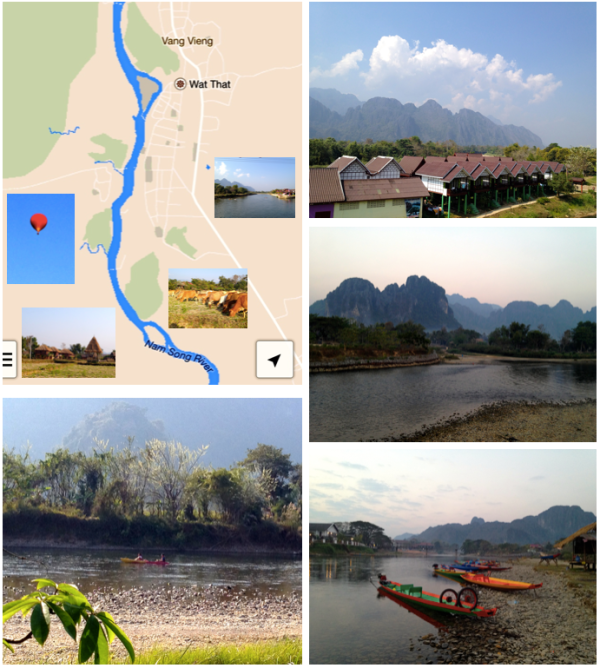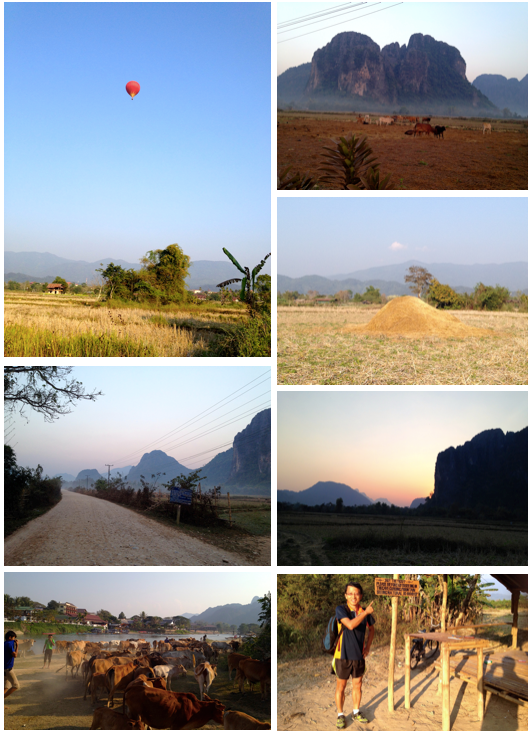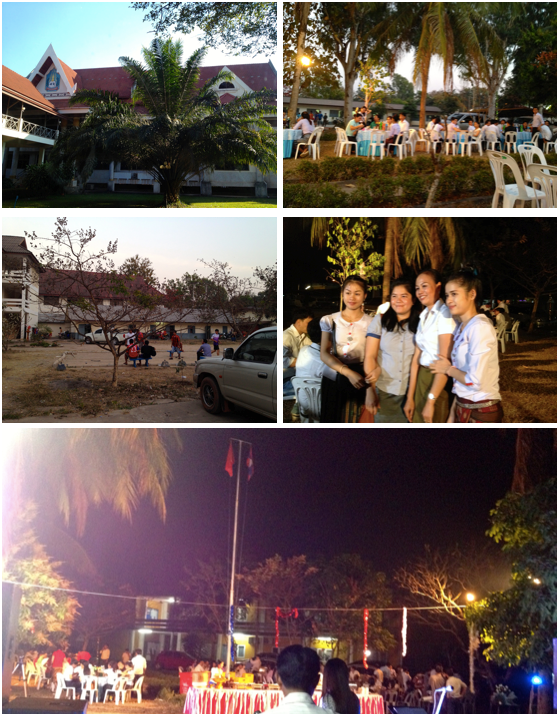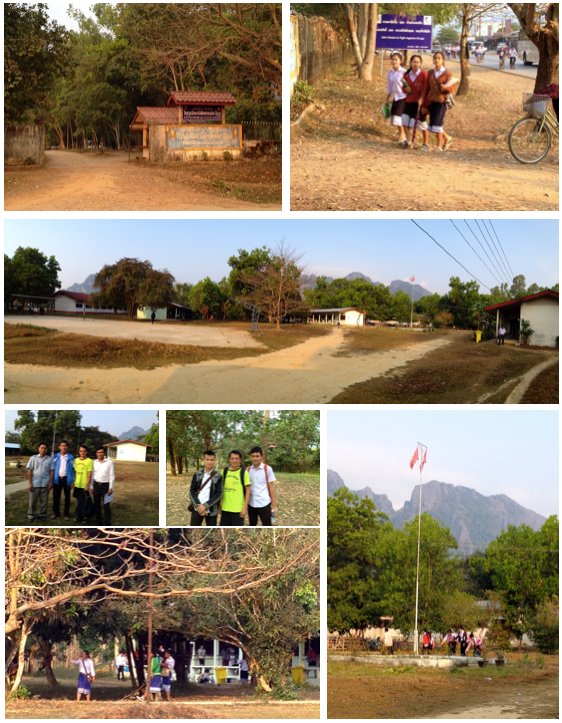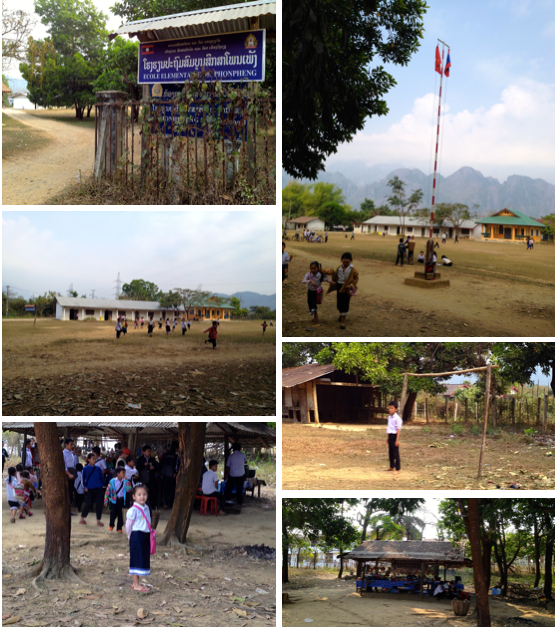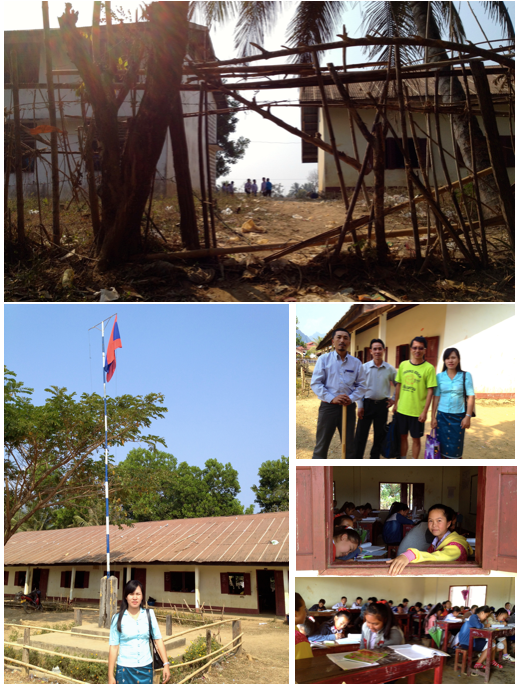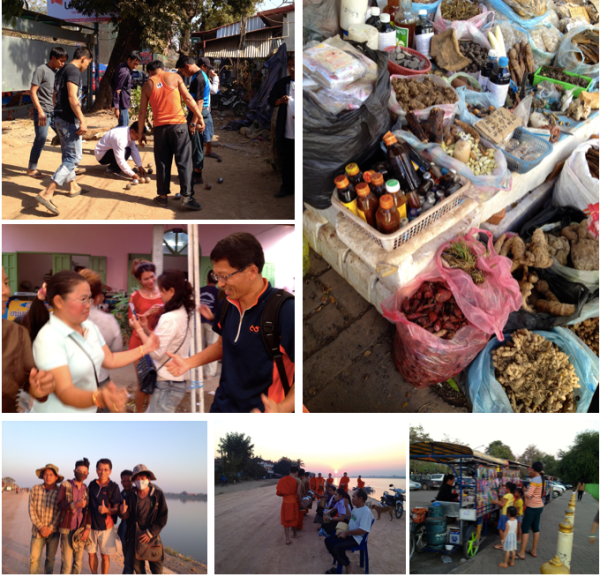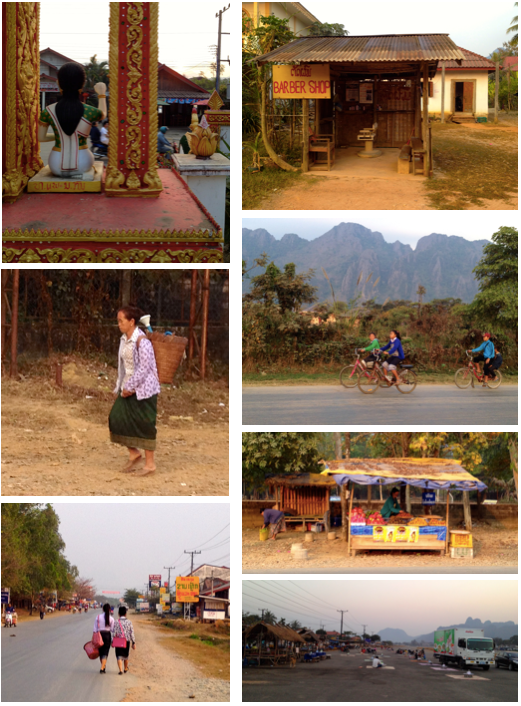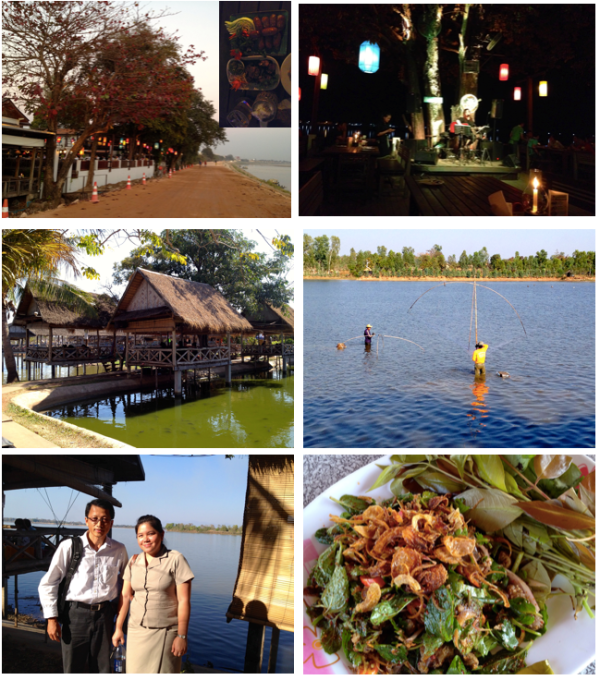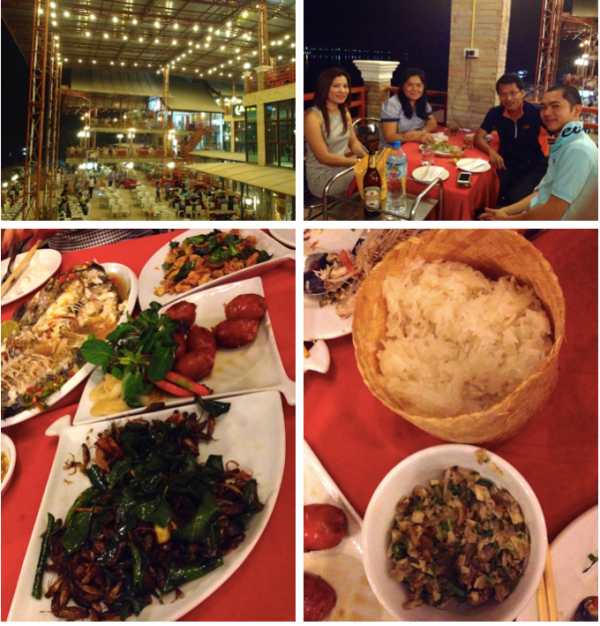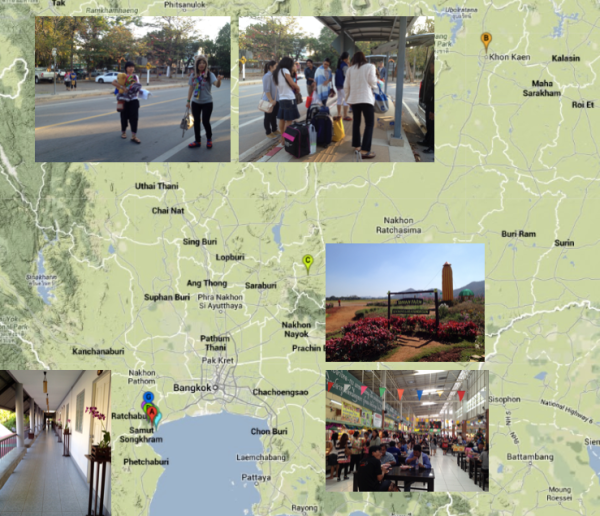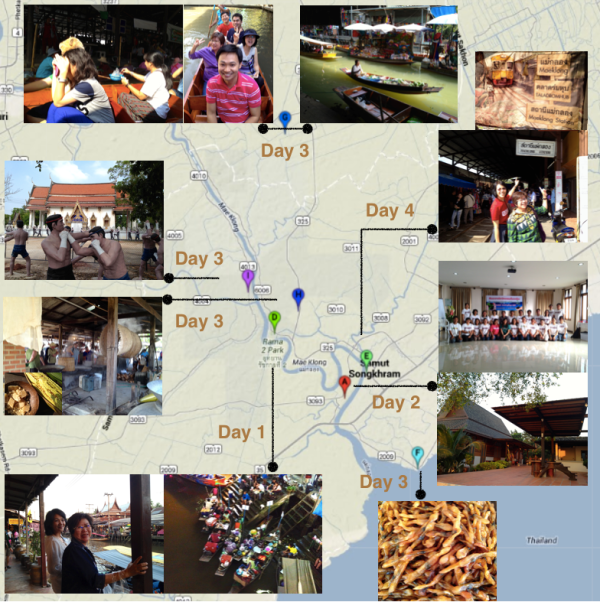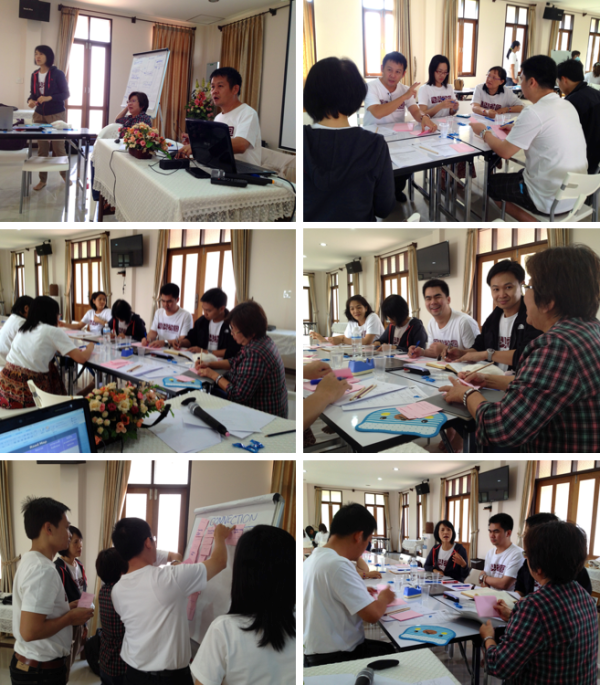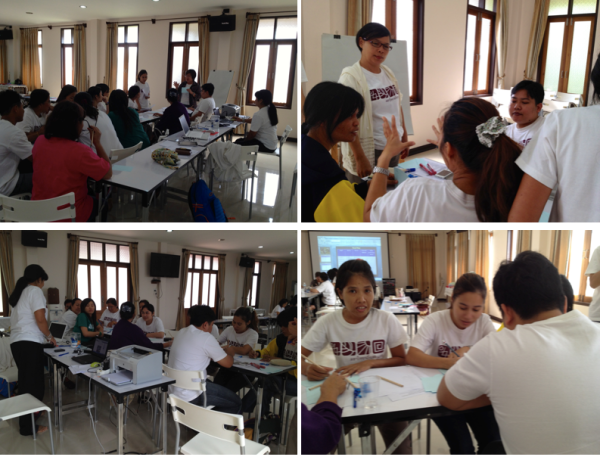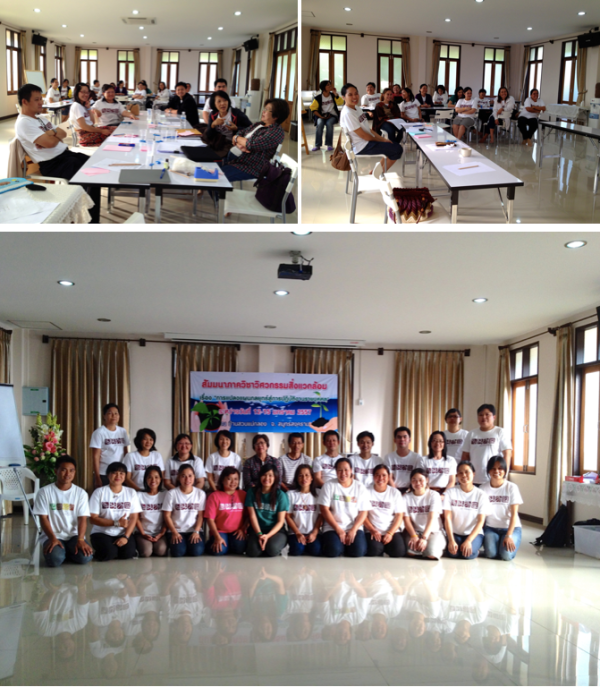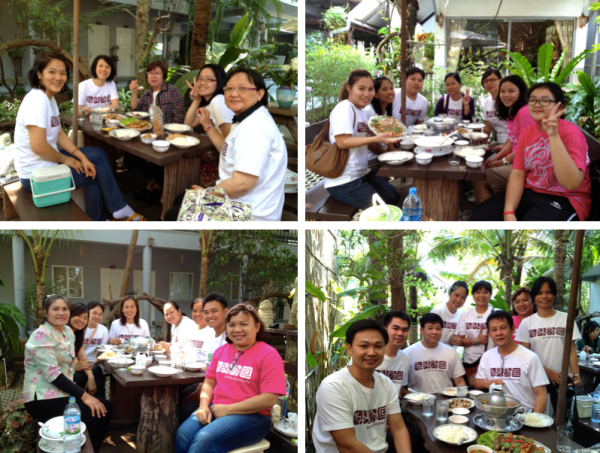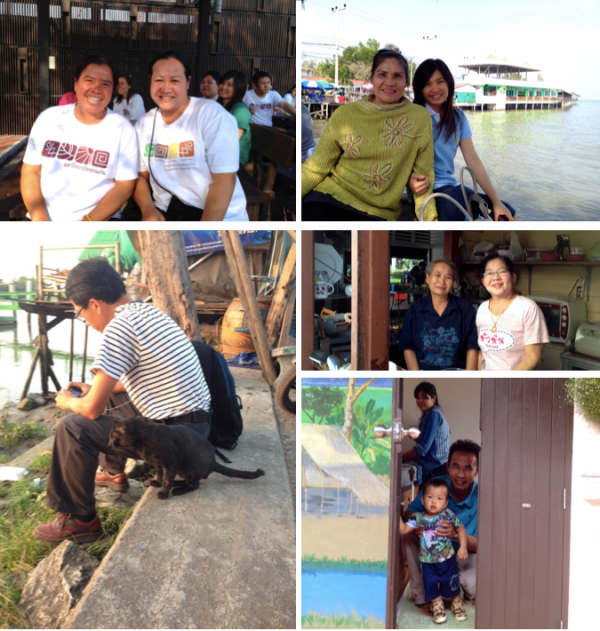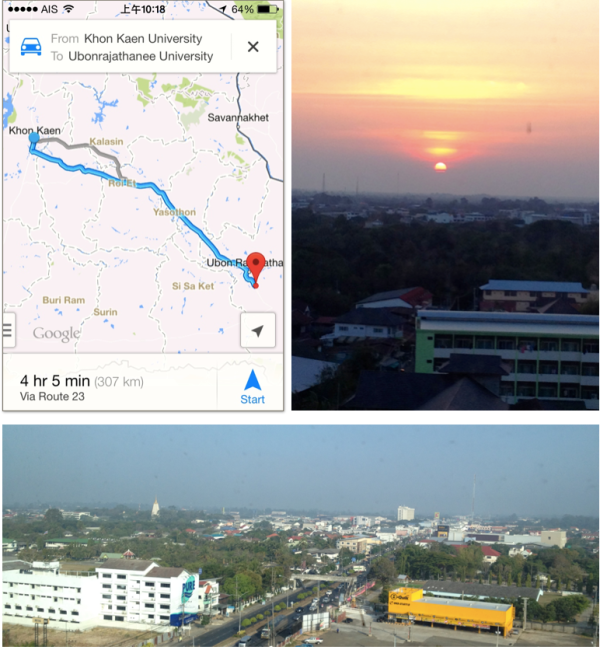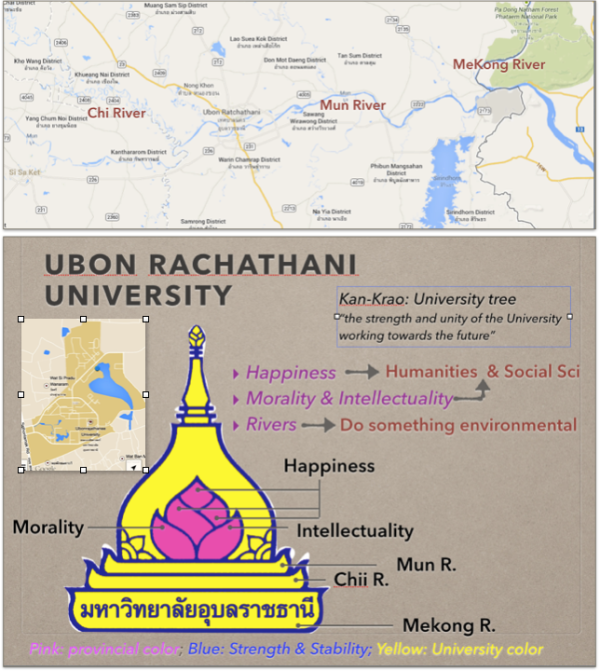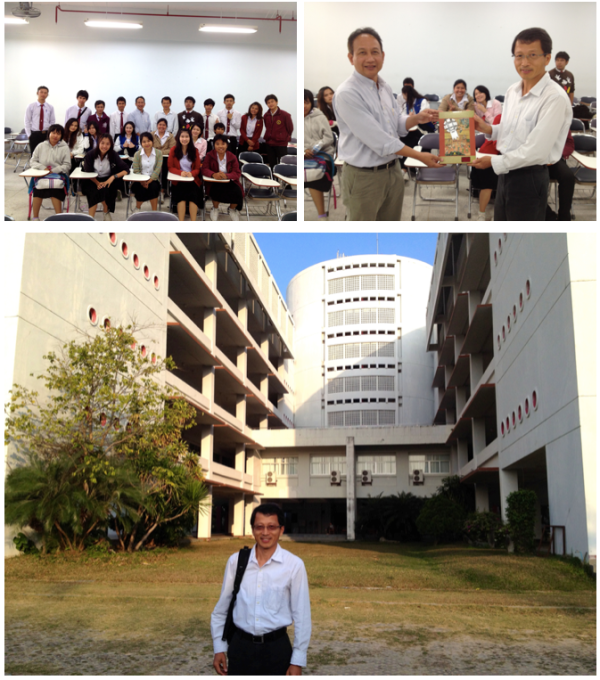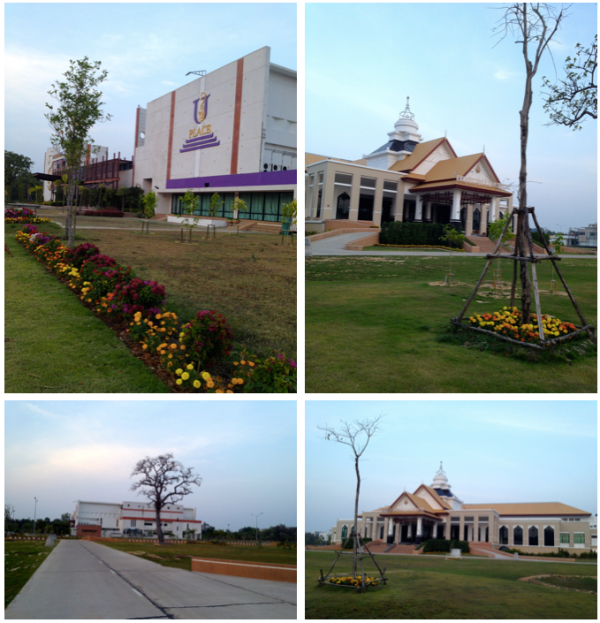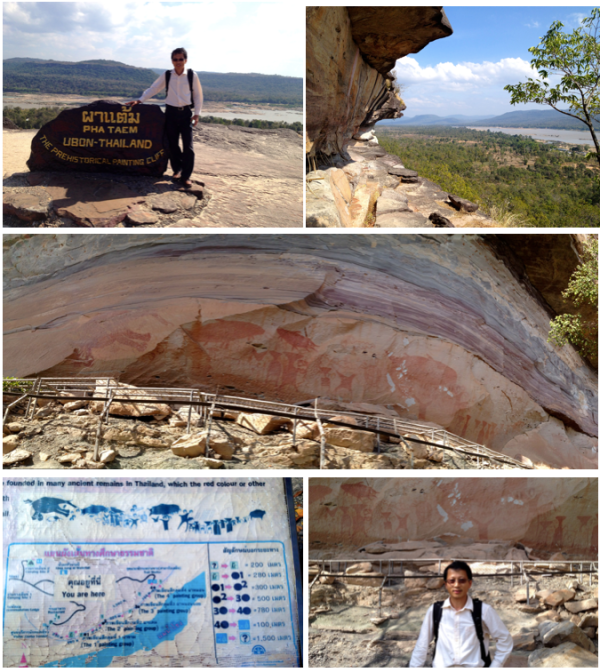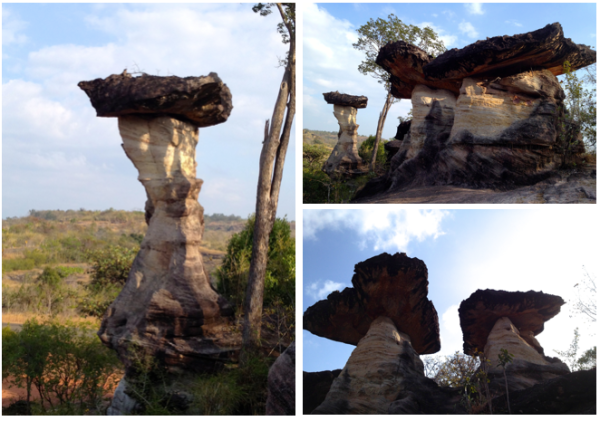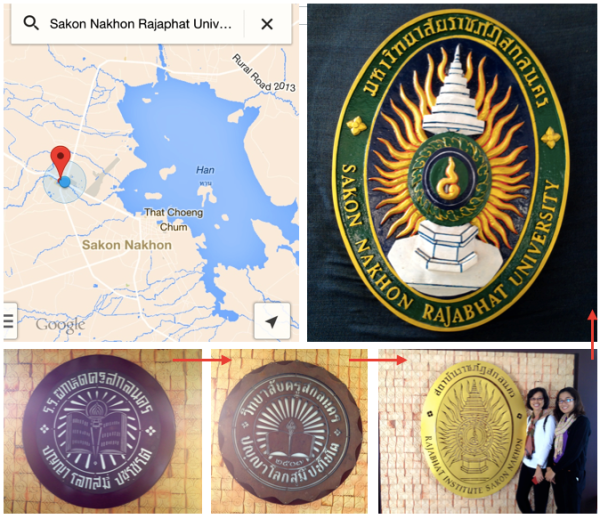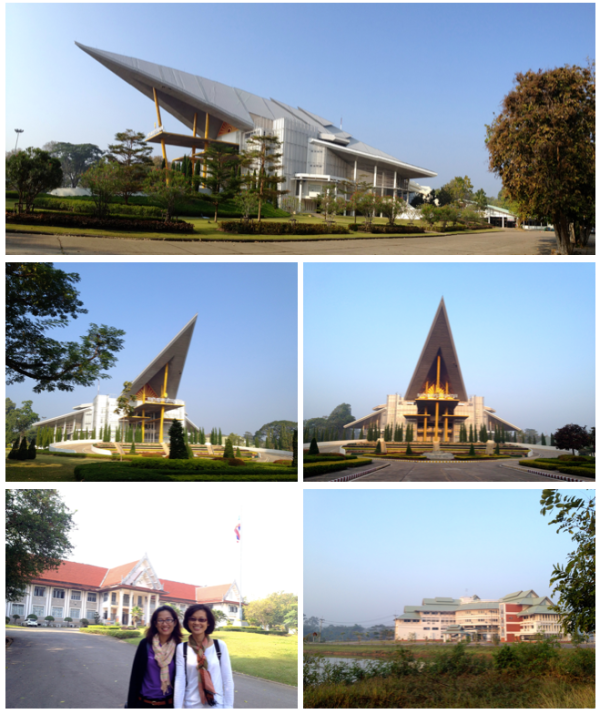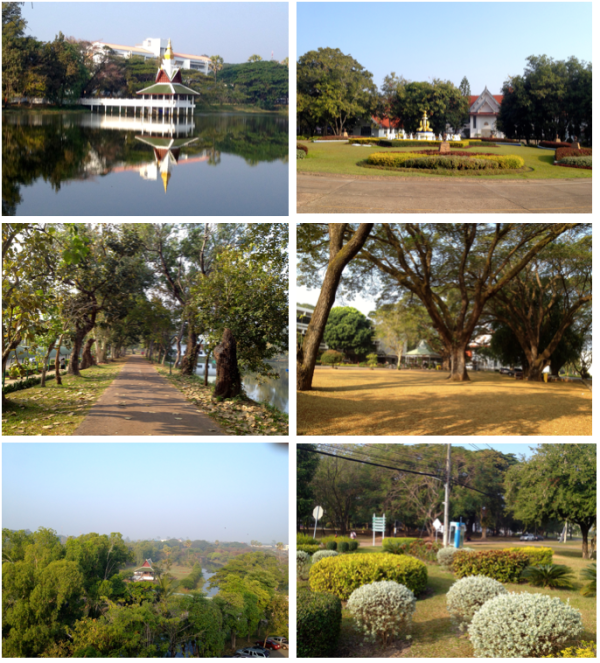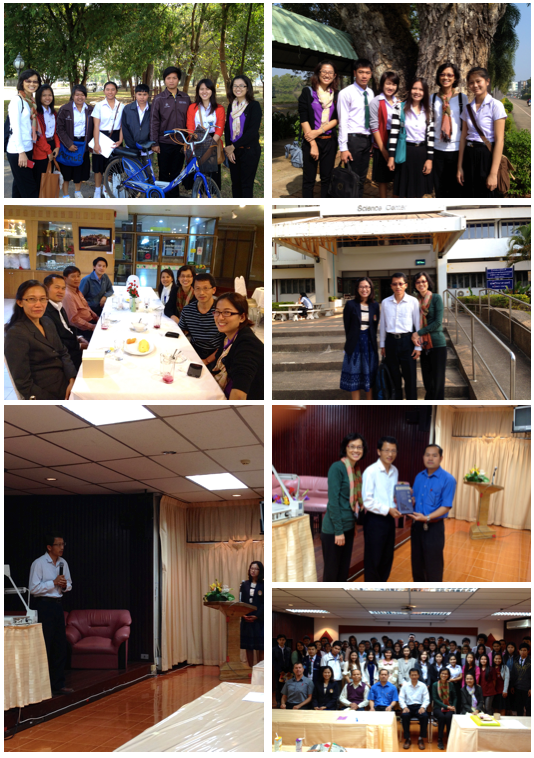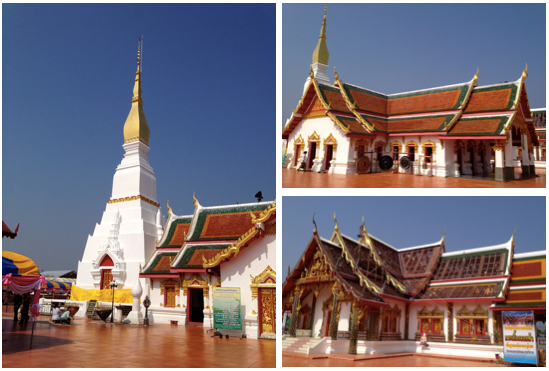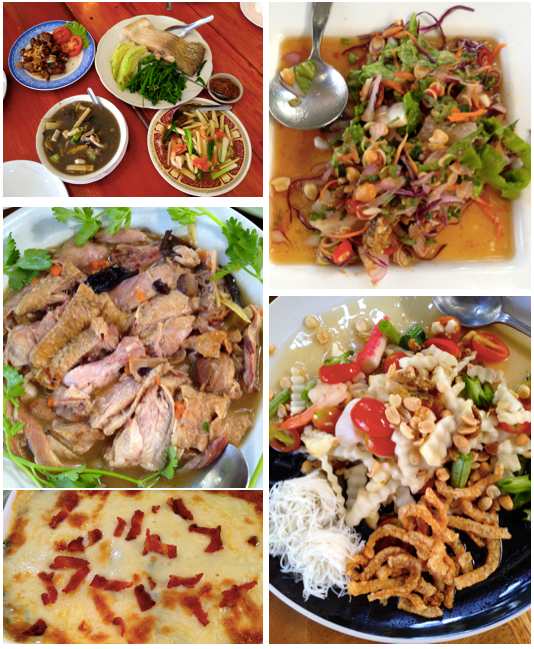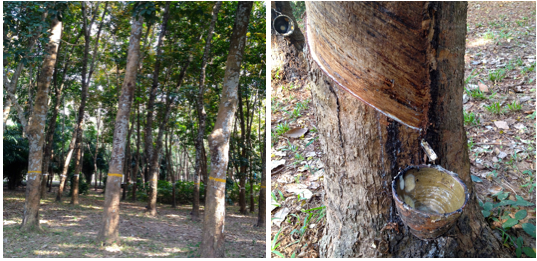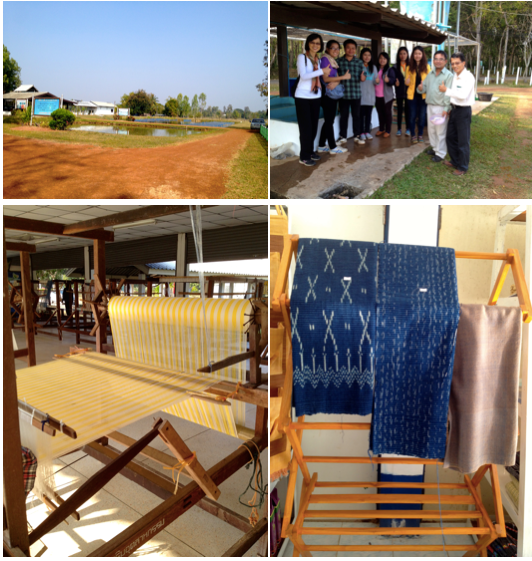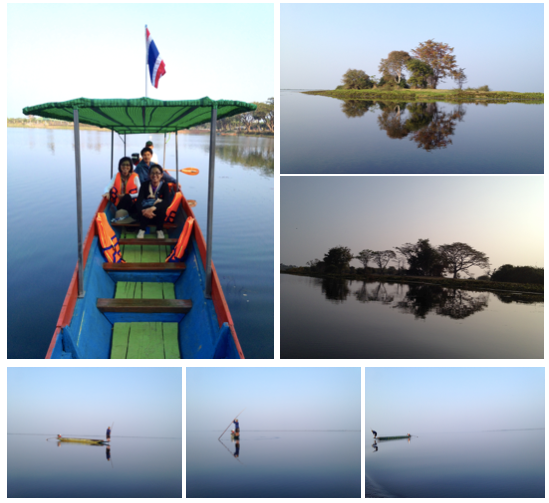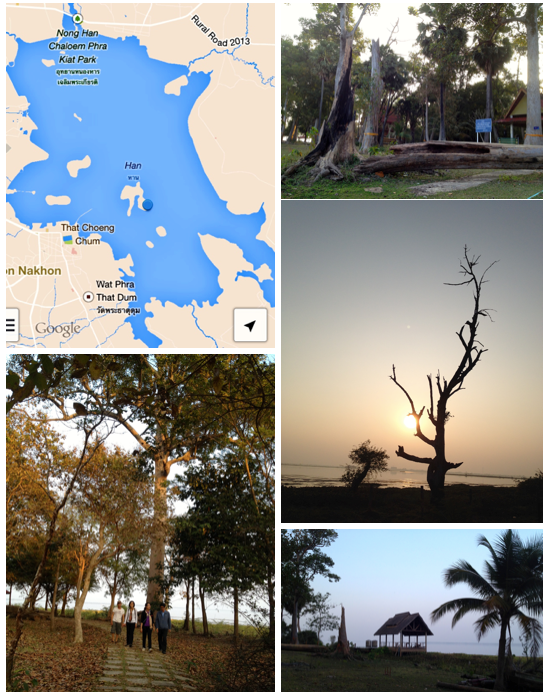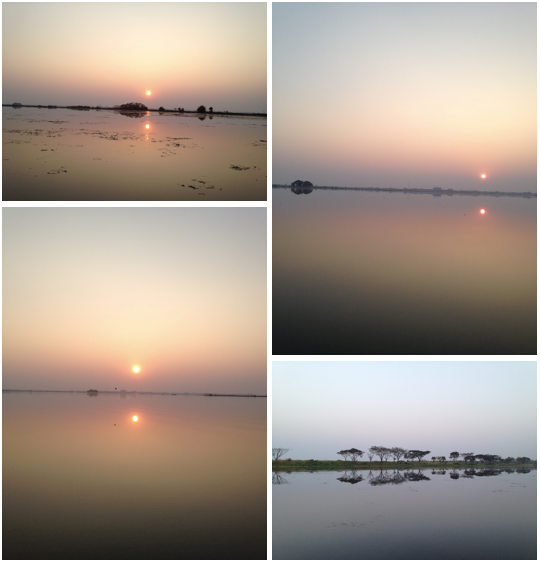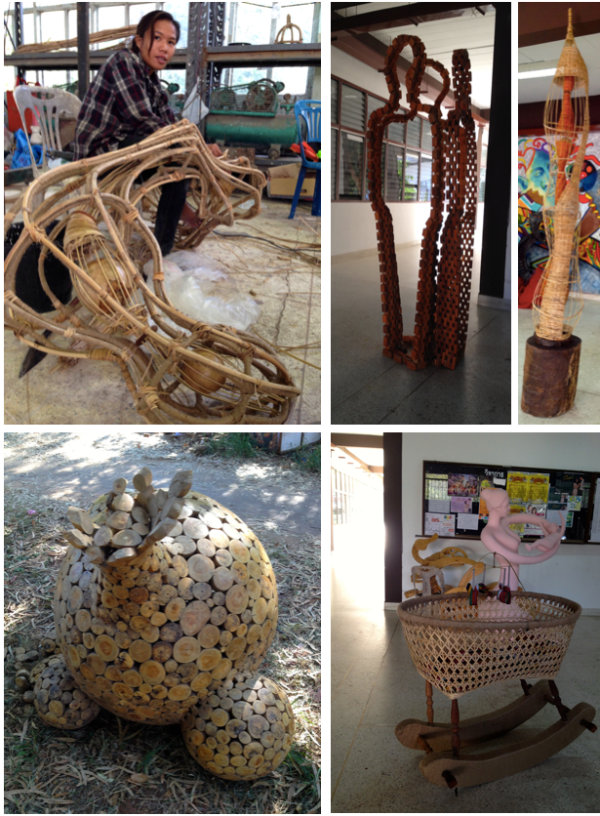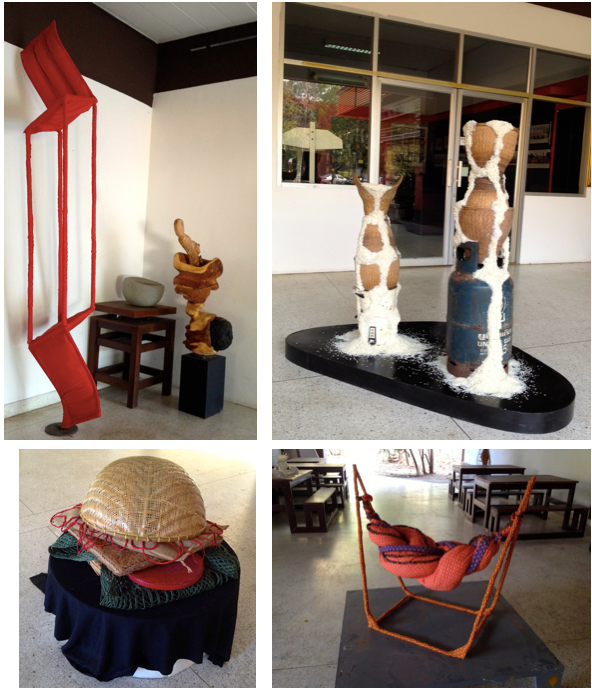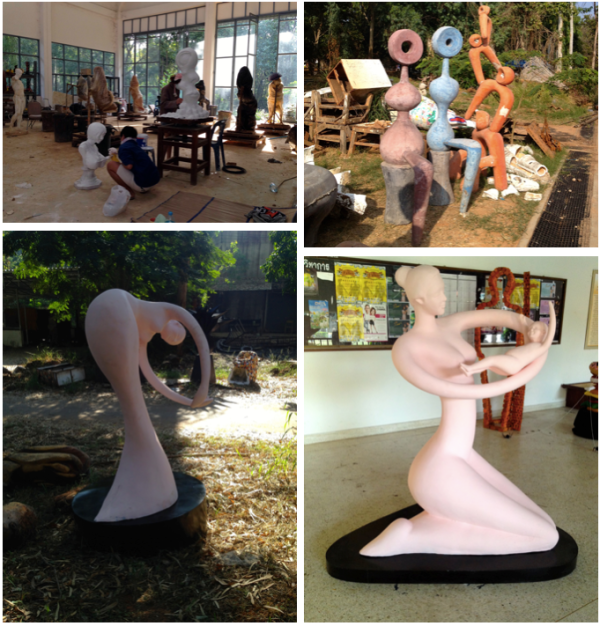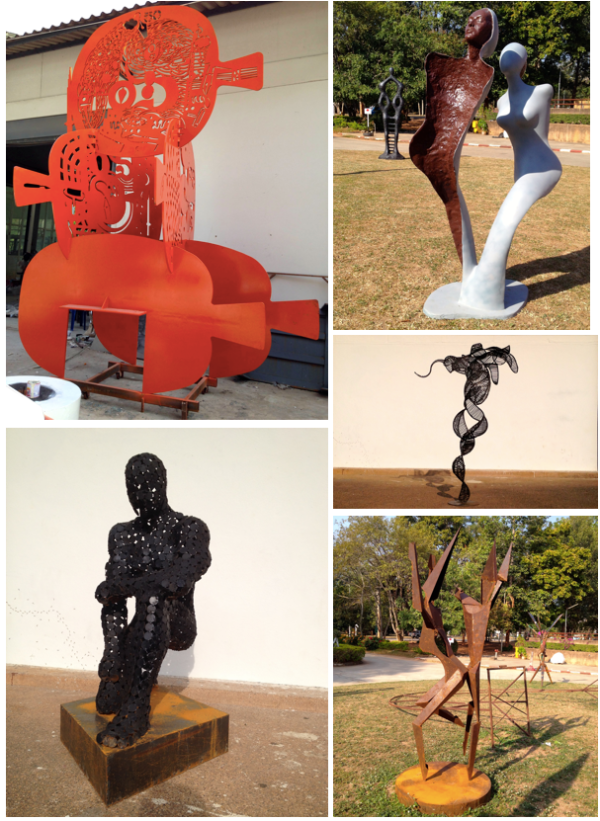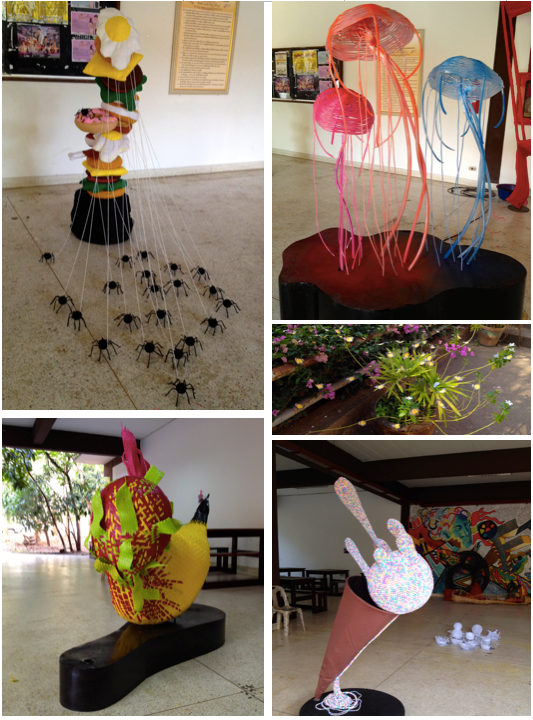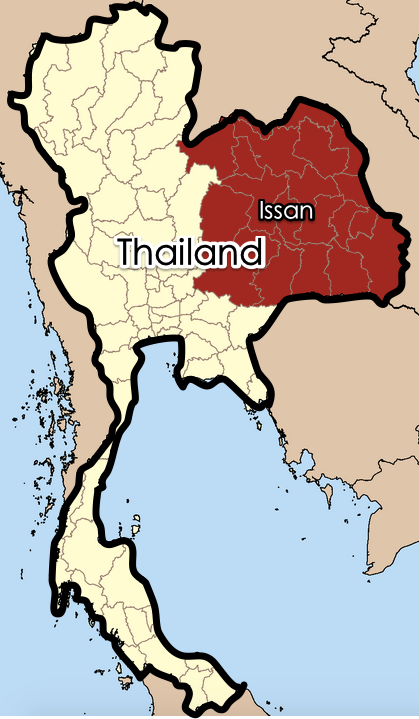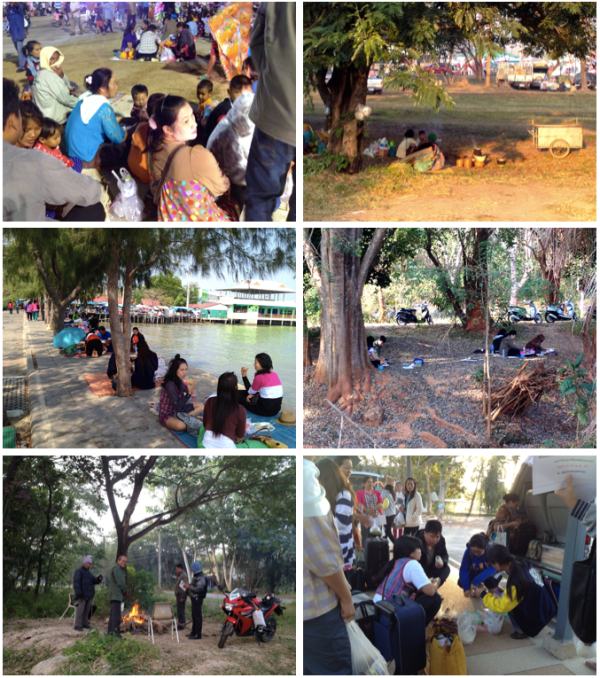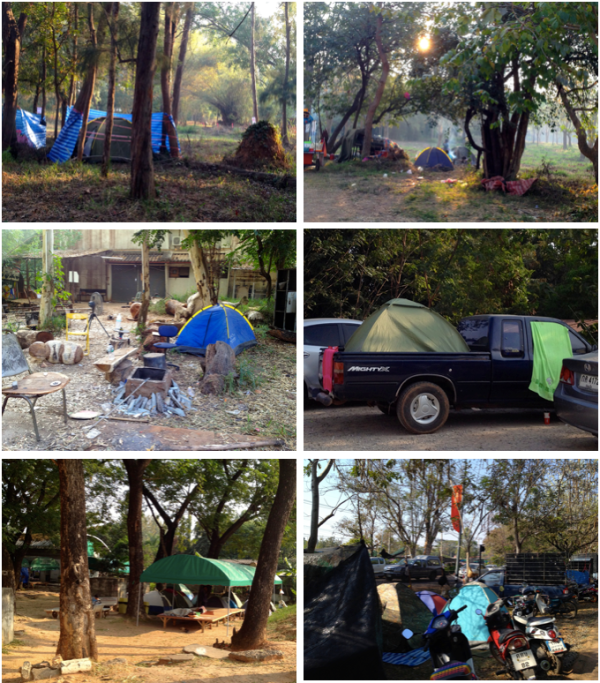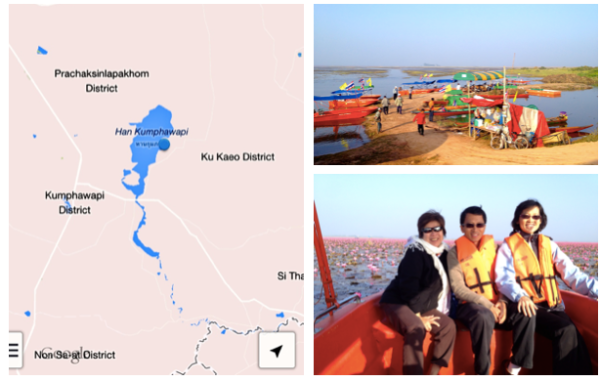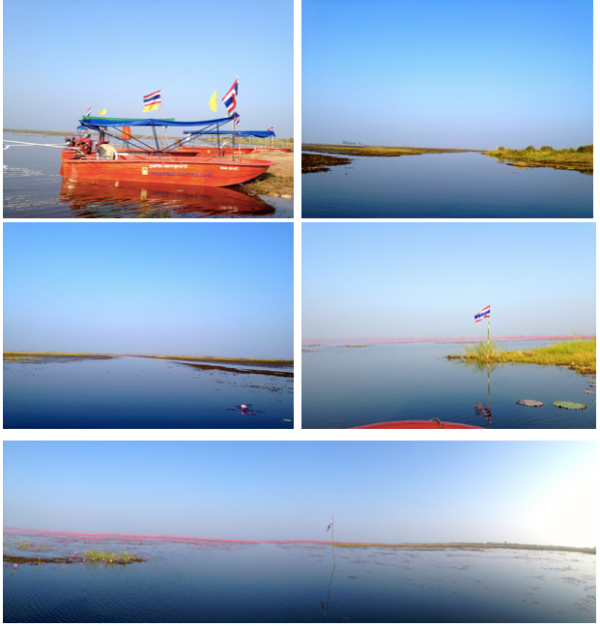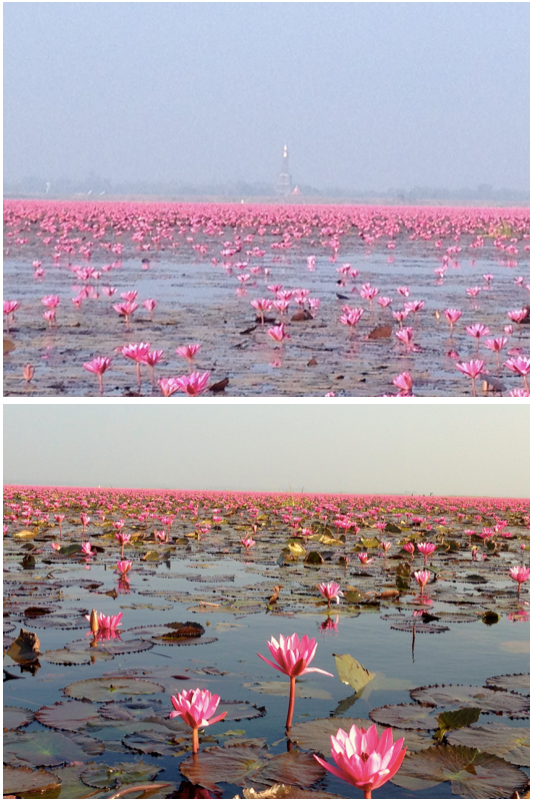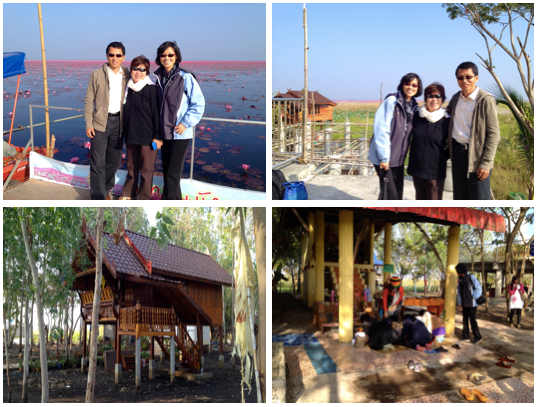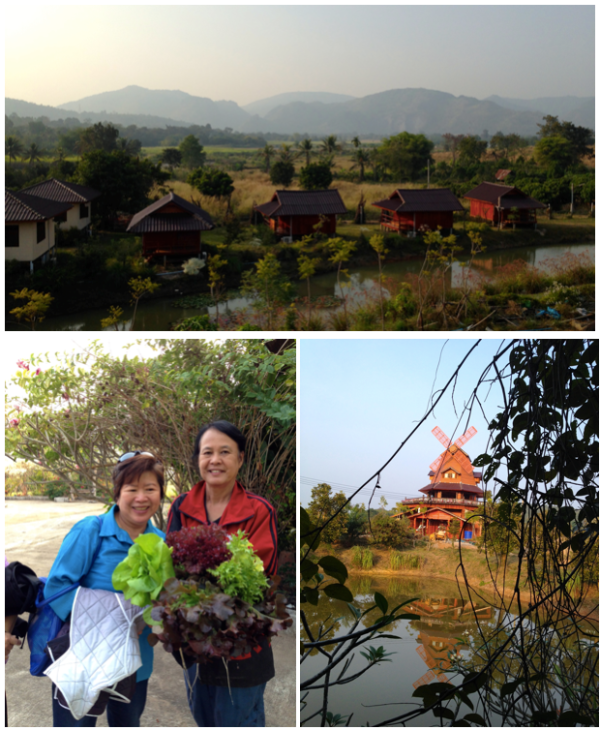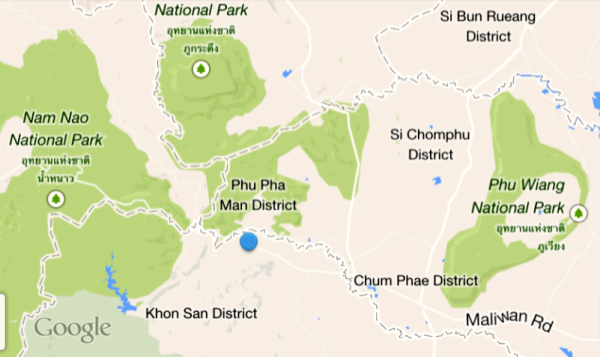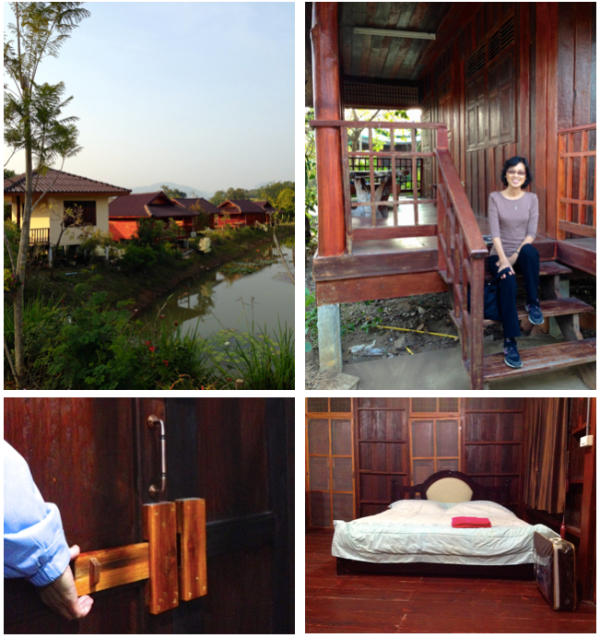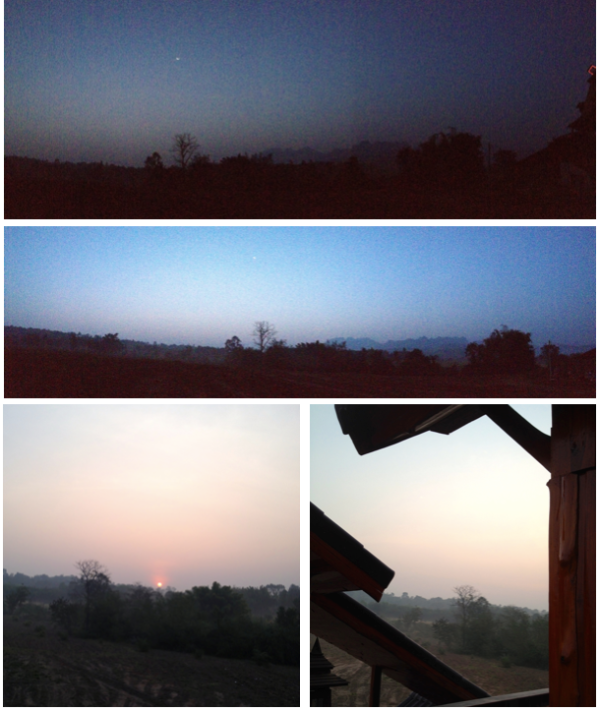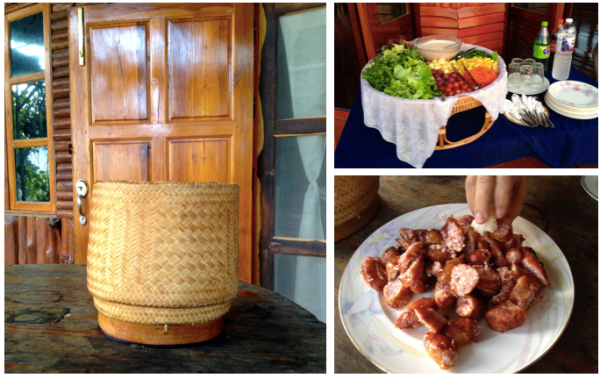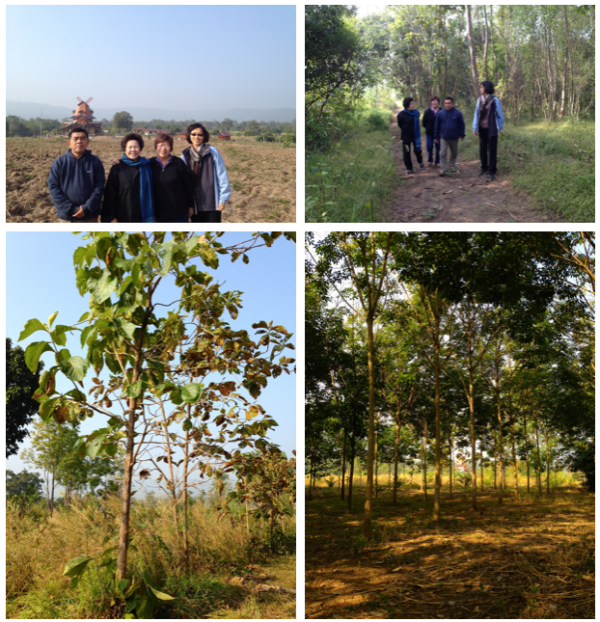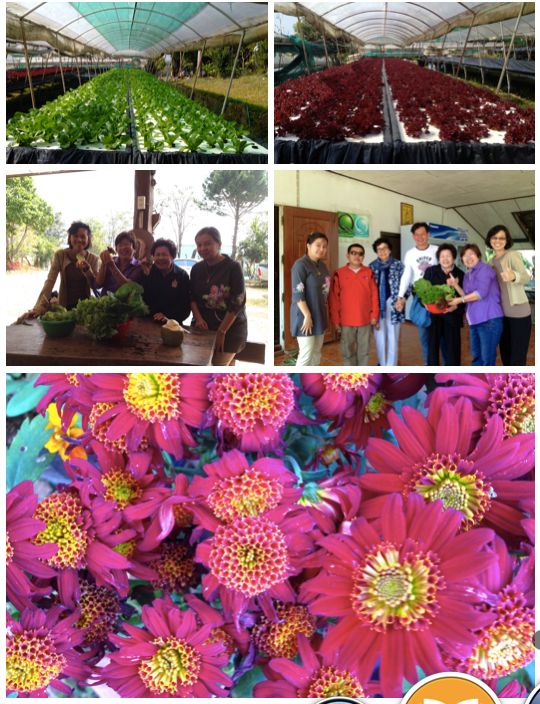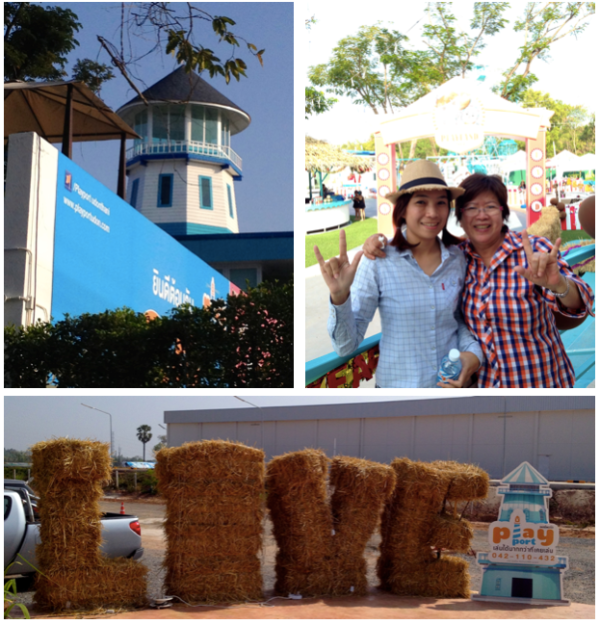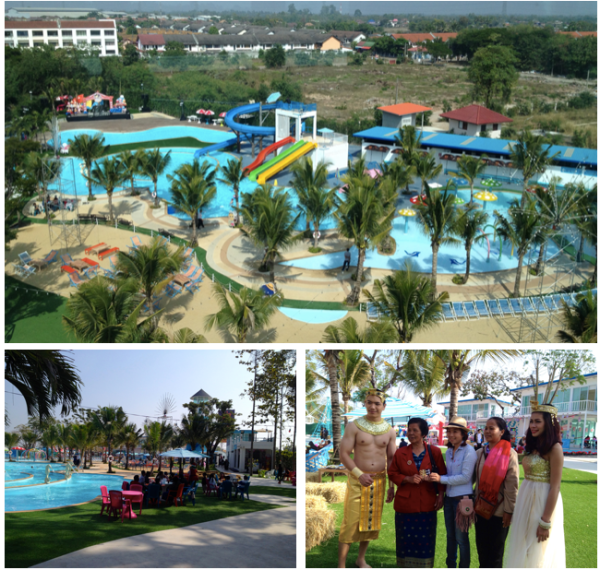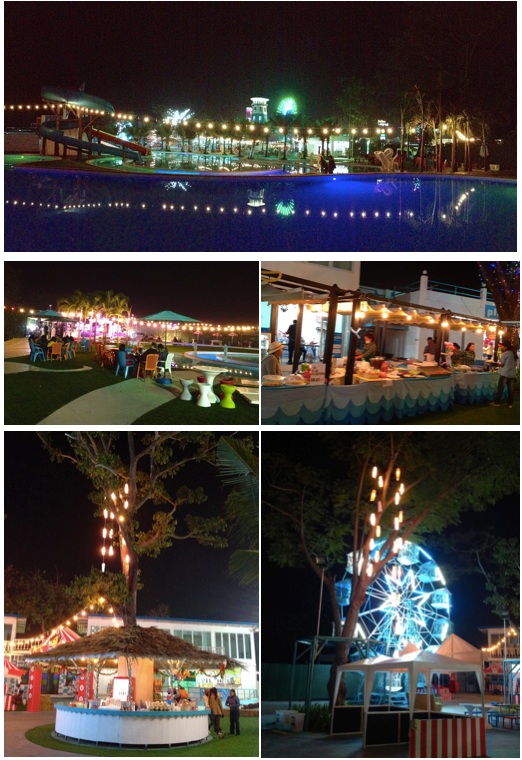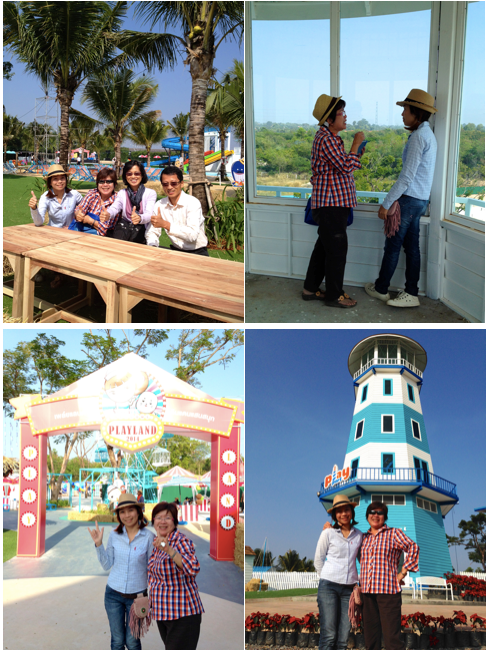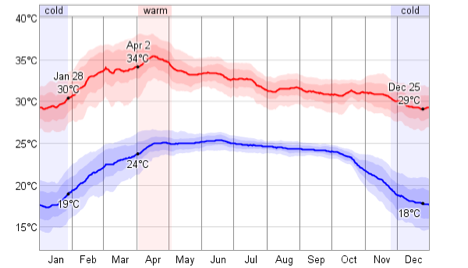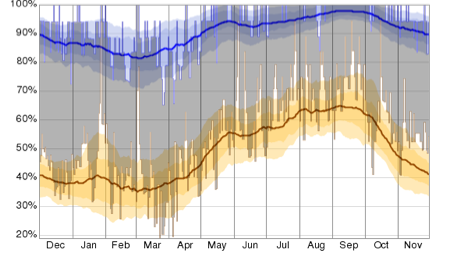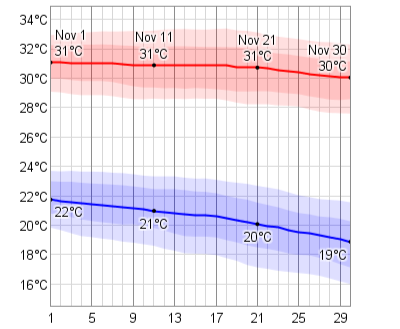Laos is a country bordered by Myanmar and China to the north, Vietnam to the east, Cambodia to the south, and Thailand to the west. It looks like this country is locked in somewhere, finding no ways out to the ocean or the sea. Yet, there is this long Mekong River, which meanders along the border between Thailand and Laos, and thus becomes Laos' very important waterway to the outside.
In October 2003, I first visited Golden Triangle in Thailand. We took a group photo at the riverbank of Mekong. It was there I first looked far into a mountain forest in Laos, a mysterious and hidden country. Afterwards, I got several times of opportunity to see this country from riverbank at different border towns in Thailand, such as Chiang Kham, Nong Khai, and Ubon area.
In the past few years, it seemed to me that I could only gaze this country afar. Then comes this opportunity because of the need to renew and apply my Thai visa at Thai consulate in Vientaine, Laos, while I stayed in Khon Kaen as a visiting scholar in Khon Kaen University. So, with a feeling of both expectation and excitement, I planned a 7-day trip to Laos (February 1-7, 2014), 4 nights in the capital city Vientiane and 2 nights in a tourist town Vang Vieng.
Transportation
In the first day of my trip, I took an international bus at a newly operated Khon Kaen Station, leaving for Vientiane directly at 8 am. Thanks to Pang, he gave me a ride so that I could catch up with this morning bus. Like boarding a flight with a boarding pass, I was asked to present my Laos’ tourist visa to purchase a ticket. Arriving at the overland checkpoint in Nong Khai, where I went through the whole process of exiting from Thailand, crossing the border bridge, and entering into Laos. Then, into Laos, this international bus went on driving to the bus terminal in Vientaine. From bus terminal, I took a Songtaew to my hotel of Malinamphu. Totally, it took me around 4 hours to get to Vientiane from Khon Kaen.
After staying in Vientaine for 4 nights, I took a van to Vang Vieng at around 10 am and arrived in there at around 2 pm. The van ticket cost me 65,000 KIP (around 260 Bhat). On the way to Vang Vieng, there’s a middle-point rest stop. Actually it’s just a simple shop, where you may grab your brief lunch, go to toilet, or walk around the nearby village.
Again, after 2 nights stay in Vang Vieng, on my way back to Thailand, I decided to take an international bus, leaving from Vang Vieng to Nong Khai (bus ticket, 85000 KIP), because it was more comfortable in the bus than in the van, considering space inside. Certainly, the bus speed is not as fast as the van. Since I was not in a rush, I could take my easy time enjoying the landscape alongside the mountain road and seeing one village after another. From Nong Khai I took another bus to Khon Kaen. It took around 12 hours from checking out of my hotel in Vang Vieng to entering into my condo in Khon Kaen. Why did it take so long a time? Because there’s a long line of visitors in the process of entering Thailand. By the way, it’s quite hot lining up under the scorching sun. In addition, I was waiting for around 3 hours at Nong Khai to get on the bus back to Khon Kaen.
Instead of Nong Khai, I should have taken a direct international bus to Udon Thani to save money, time and energy. In Udon Thani, there’re more frequent bus service.
Capital City Vientaine
Mekong river
In the capital city Vientaine, the first thing I did was to find where the Mekong River
was located, and take a really long walk along its riverbank and nearby villages. What I saw there was the landscape of Thai-land, no longer the Laos’ view as I gazed from riverbank of Thai side in the past. Since my hotel is near to riverbank, I had my morning walk every day. I tried to get up as early as possible, in order to shoot some good photos of sunrise there. Of course, I also enjoyed staying there in the afternoon until the sun set.
The flow of Mekong river in the section of Vientiane looks quite slow. I am sure you will see it gentle and peaceful. Besides, as you can see from the map, Mekong river makes a sharp turn of 90 degree in downtown Vientiane area; approaching to Vientiane, it flows horizontally, and then downwardly, going away from Vientiane. This thus creates quite spacious flood plains near the riverbank because of flow characteristics of stagnant water at the corner.
One thing I want to specially mention was my morning jogging along the riverbank of Mekong. I would love to jog every morning there, yet I still got pain in my right knee. So I could manage only one lap to realise my dream of jogging along Mekong river. So I started from the corner point and jogged down to the southern end of sidewalk. Then, turning back, I jogged all the way to the other end, which is quite close to Wattay International Airport. Totally my jogging distance was around 11 km.
Historic sites
I did not spend too much time touring around the city because the weather there was hot during the day time. The upper three photos here were taken near my hotel: Chao Anouvong (at riverbank), King Srisavangvong (at Rue Samsenthai and Rue Setthathirath), and That Dam Stupa (Rue Chanthakoummane). That Dam Stupa reportedly houses a seven-headed dragon that protected local citizens during the 1828 Siamese-Lao war that destroyed much of the city, according to Robert D. Fiala.
The middle 2 photos are like landmarks in Vientiane: Buddhist Architecture, and Pha Tha Luang. The building in the former one belongs to Luang Prabang style. In the latter one, "it is the most significant Laotian religious and national monument. It is situated on a hill about three miles north east of the center of Vientiane (Robert D. Fiala)." So, if you said you have been to Vientiane, Laos, you should present this photo with you in there as a proof. That’s what I told to Dr. Wanpen Wiroganagud, who has been in Vientiane for her training program quite a few times, but never had this picture of her.
The lower 2 photos are the views of front side and upper tower of Patuxai. According to Robert D. Fiala, "the Patuxai, The Arch or Gate of Triumph, is reminescent of the Arc de Triomphe of Paris - large scale and with a single arch with an observation deck on top. It was built to commemorate Lao who had died in battle serving their country before the revolutionary wars. It was begun in 1960 and completed with concrete donated by the United States for the construction of the airport. As with its Parisian counterpart, there is a broad processional avenue leading to it and a series of roads radiating out from it. Up close one can see the various Lao motifs and designs. The upper part is uniquely Lao."
Tourist town Vang Vieng
Vang Vieng became a famous tourist town because of its unique terrain and limestone karst landscape. Like a basin, this town is surrounded by mountains and hills (green area in the map), with Nam Song river flowing through it. Roughly, Vang Vieng can be divided into 2 parts of river and plain, in view of journeying around this town. Water activities like kayaking or inner tubing attract many young backpackers, while its natural terrain can be hikers' and climbers’ favourite place. As I have observed, this town was always full of foreign tourists, including westerners and visitors from China, Japan and Korea.
I love to walk around in a new place. So, after seeing around the riverbank of Nam Song, I have spent most of my time in exploring its plain area, which is harvested rice field between the river and the mountain. This reminds me of my childhood in my hometown, Taiwan, walking on the trails of clay soil of paddy. Also you can see lots of cattle,
grazing on the fields from one place to another. I even explored to a place of limestone cave. I spent 10,000 KIP to buy a ticket. Then, a guide took me into the cave. It’s like getting into an underground tunnel, deep and narrow. You need flashlight to find your way in there. At the end, there’s a water pool. The guide told me whether I want to swim in it. I was thinking who dare to swim in such a deep and dark place. He said that there’s an underground river of 20 meter long.
After coming up the cave using my feet and my hands, the guide told me that you have to paid me 100,000 KIP. I replied "why I have to pay it? I have paid the ticket already." He said “you pay to the tour guide." He did not let me know that he is my tour guide. He should have told me before we had this cave adventure. Well, I paid it.
Water activities
Foothill paddy
Schools in Laos
I was very curious about Laos' education system before I went there. Luckily, Dr. Aom Dechapanya of Ubon Ratchathani University introduced to me her Ph.D. student of Laos, Sidxay Makvilay (Tee), when I planned my trip to this country. In turn, Tee told me that he will ask her sister Keomany Makvilay (Kheng) to help tour me around the city once I get there.
Kheng is a lecturer of Faculty of Education in National University of Laos, Vientiane (NUoL-V). So I asked her for campus tour. After I met Kheng and had lunch together, I got this opportunity to see her campus in the north of Vientiane. The next day, Kheng invited me to participate a dinner party organized by senior students in another campus of Faculty of Engineering. Because of Kheng’s arrangement, I guess I at least got some idea about NUoL-V, though still quite superficial. In general, NUoL-V consists of 11 faculties, including architecture, engineering, economics and business administration, environmental sciences, law and political sciences, agriculture, education, forestry, letters, sciences, and social sciences. These faculties are located, respectively, in 4 different campuses in the city of Vientiane.
In Vang Vieng, I came across by chance a high school when I walked along the street. I saw many students on the street walking or riding their bikes into campus before the office hours.
Driven by my curiosity, I also walked into their campus to see what’s going on in there. I tried not to disturb their school activities and stood afar to take my photos. Then, I thought I’d better talk to some teachers and express my intention so that I might be allowed to hang around in the campus. So, I talked to School Director and his colleagues and we took a photo together. Since one class was in recess, I approached and talked to them in English. They were curious about a foreigner like me, but they all were too shy to chat with me in English. Yet there’re 2 of them, who were confident and capable of English conversation. Actually, both of them spoke English quite well. I was surprised at their fluent speaking because they learned only from school class. At the end of our conversation, I took a photo with these two high school students, the future of Laos.
After leaving this high school, I took another long walk into a village, where I found a primary school and a secondary school. Both of them were bordered to each other, with a simple bamboo wall erected in between. What might catch your eyes in there is always spacious playground, bungalow-like classrooms, and national flag pole station. Kids were so pure and happy, hanging around and playing in the playground.
Like students, I went further into secondary school campus through a hole of this bamboo wall. Again, I first talked to school teachers and then students. Accompanied by a lady teacher, I was allowed to have a talk with a girl student, who is good in English speaking. She asked me in English how old I am. Wow, that’s a good start of our conversation! I responded, "you make a guess." She said that I am 30. Did I look so young? I encouraged her to speak more and replied, “More than 30." She said, 20. After her teacher’s hint, she changed a number of 40. Like this, we had a happy talk. At last, I took her a photo. There seems full of hope in her eyes, as she looks out through the window.
National University of Laos, Vientiane
High School in Vang Vieng
Primary School in Vang Vieng
Secondary School in Vang Vieng
On the Streets and Meals
On the Streets
When you get to a new place, most of time you will be walking and walking. So you’d better open your eyes, erect your ears, and enjoy your dull walk. There’re something interesting you may catch on the streets.
When I got off my international bus at Vientiane bus terminal, the first scene I saw on the street was metal ball throwing game. According to WikipediA, "Pétanque (French pronunciation: [petɑ̃k]; Occitan: Petanca [peˈtaŋkɔ])
is a form of boules where the goal is to throw hollow metal balls as close as possible to a small wooden ball called a cochonnet (literally "piglet") or jack, while standing inside a starting circle with both feet on the ground. The game is normally played on hard dirt or gravel, but can also be played on grass, sand or other surfaces." Then, on the sidewalk of one major road in Vientiane, you will see a whole row of street sellers who are selling Chinese herbal medicines, some old spices and ingredients, and some other weird species. Some of these stuffs are rare to see in supermarket or even in the traditional market.
As I walked into a village near the riverbank of Mekong, a quite loud music of Issan melody caught my attention. The music was cheerful and delightful. So, I traced to the source of the sound and found that there’s a banquet. The banquet host and guests appeared to be fully amused with Laotian's dancing after the banquet was over. With their warm welcome and hospitality, they treated me, a stranger and foreigner, a glass of Beerlao and invited me to join their dancing. Why not? I was gradually used to such a dancing event in Khon Kaen though I was quite awkward at dancing. It’s so good I could talk and take photos with the people of Laos, despite of language barrier. After all, this is a way to explore culture of a different country. And this made my trip more fun and more meaningful.
Another thing worthy of notice was monk parade early in the morning.
It looks like that such an event is quite common everyday and everywhere in Thailand and here in Laos. Before monks appear, villagers with meals in their hands would have lined up, waiting for their coming. One by one, villagers gave food to monks. In Vientiane and Vang Vieng, I saw villagers giving sticky rice to monks. Later on, monks will sing some blessing song to villagers. Such an event goes on and on at a fixed time every morning. It appears that both monks and villagers depend on each other. There’s give-and-take. Who is the giver and who is the taker?
Besides, in Vang Vieng, when I passed by a temple, I saw a lady statue sitting at a side gate, with her raised right hand beckoning to the street passersby. The scene posed here seems to deliver a mixed feeling of the old and the new together. It is the old part when you watch a solemn temple, and it is the new part as you see lady's beckoning gesture, which is, sort of, a modern way of advertisement. As I walked further on the street, look what I have found: a barbershop of very old fashion. I imagined what I would look like and how barber would cut my hair, sitting on barber’s unique chair there. Following this, I was surprised to see a lady backpacker. Her backpack was made of bamboo material and it looks ergonomic and durable. In contrast, it is totally different from the ones the young ladies have carried in their back, as shown in another photo. Finally, I saw a seat-on-the-street restaurant: no decoration, no tables, no chairs, no air conditioning, and on the ground just the food you eat. So, you sit on the straw mat and enjoy your food and the sky roof up there.
On the streets in Vientiane
On the streets in Vang Vieng
Meals
The first day of my stay in Vientiane, I found a restaurant at the riverbank of Mekong quite special. I was attracted by its lanterns hung on the trees. At night, they become a very special view along the Mekong river. As usual, I ordered my favourite meal of Issan (Laos) style, which includes sausage, pork, sticky rice plus Beerlao. It’s my first dinner in this country of Laos and it tasted just perfect and wonderful.
Then I had one lunch with Kheng in a special restaurant near a lake called Nong Seum located in the north of Vientiane. There you can reserve a “Kotex (thatched cottage)" for your lunch for the whole afternoon. In the lunch, Kheng ordered one special dish called 'Larb'. As Kheng has explained, it means "lucky". It is a traditional Laotian dish served in special Baci ceremony such as wedding, new year, house moving, and so on.
In another dinner, it’s also a special one, not because of meals or appearance of restaurant, but because I got to know another 2 friends of Laos, Teauto Mueangvong and Add Vilayphone. Both of them are Kheng’s good old friends. Teauto teaches in a high school of Vientiane and he is quite good at French language. So, totally, now I have 4 friends in Laos, including Kheng, Tee, Teauto, and Add. It’s so good to have them joining in the dinner.
Concluding Remark
Laos has been my dream country, and finally I went into its land, walking and jogging along Mekong river, and exploring 2 different cities, Vientiane the capital city and Vang Vieng a tourist city. I guess this trip serves to mark the end of my days in Khon Kaen, Thailand. Because of Dr. Aom and my Laos friends Kheng, Tee, Teauto and Add, I could experience such a wonderful trip.



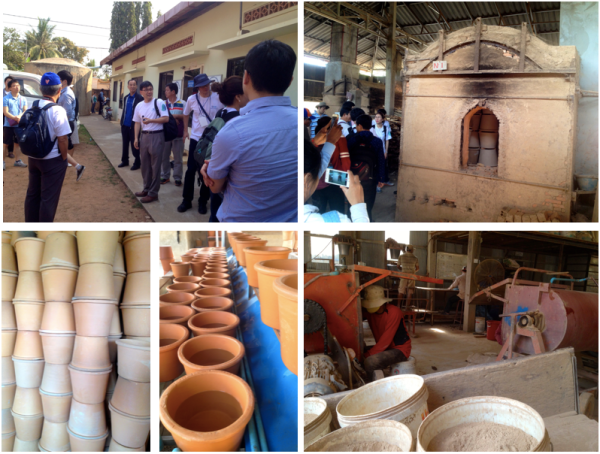

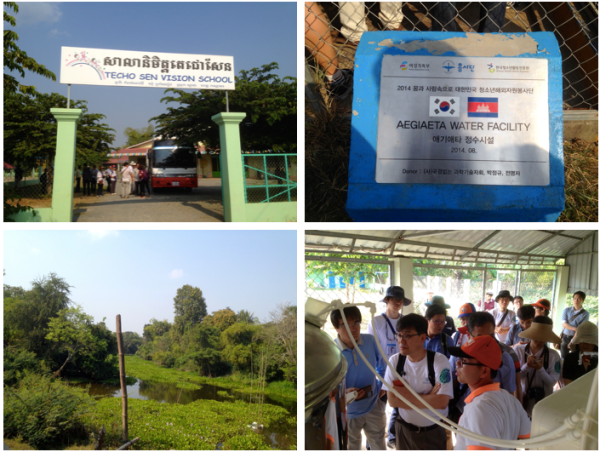

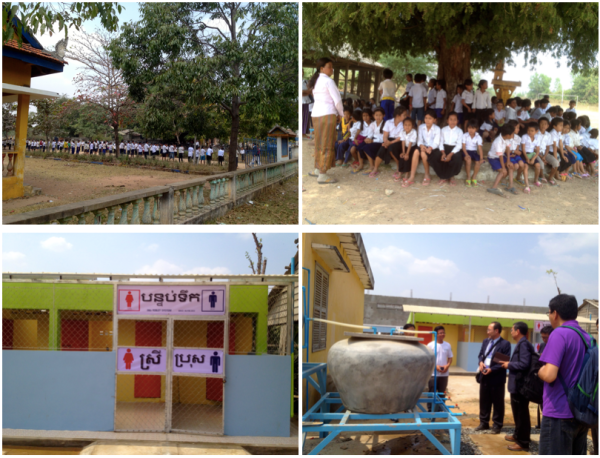
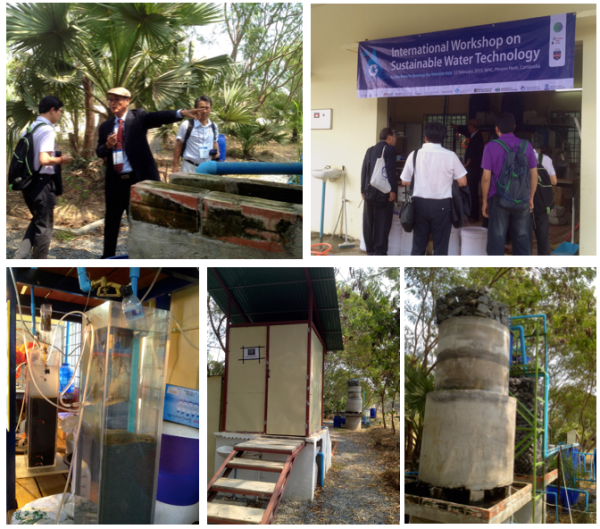


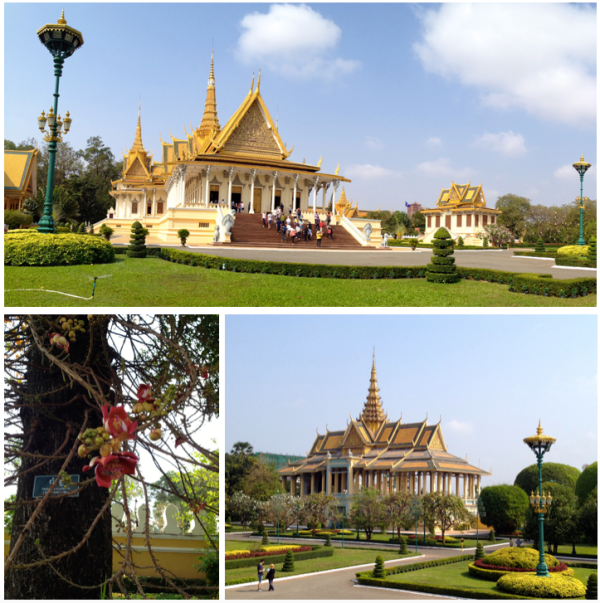
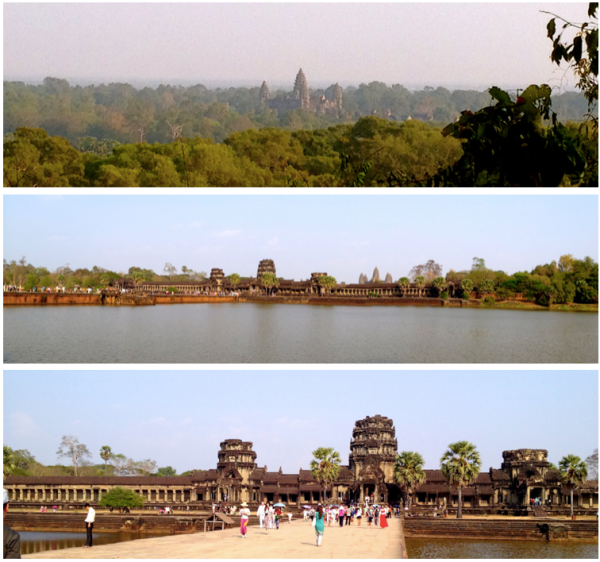
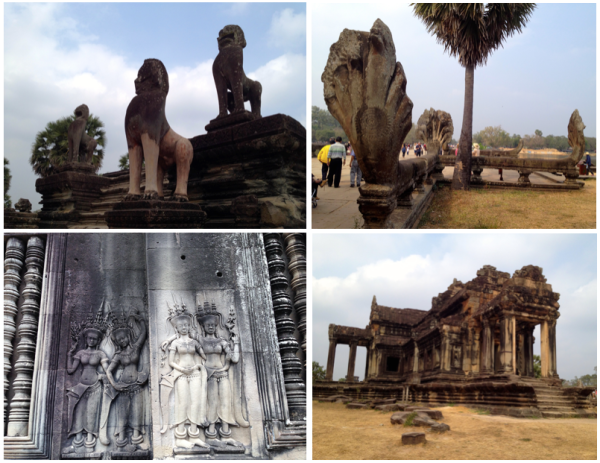


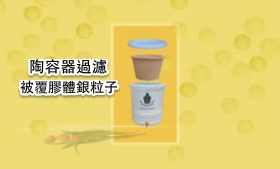 註1
註1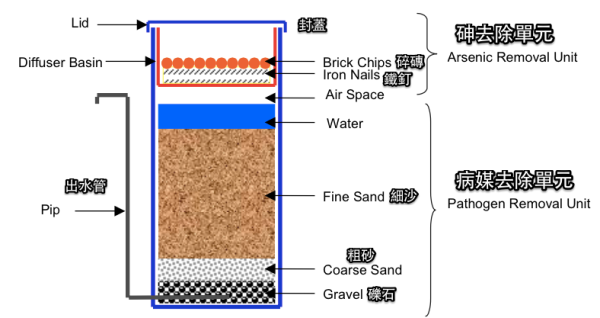 註2.
註2.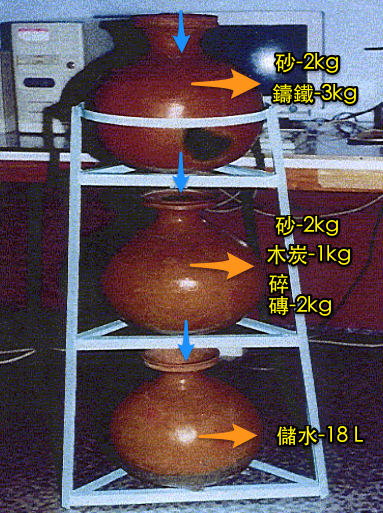 註3.
註3.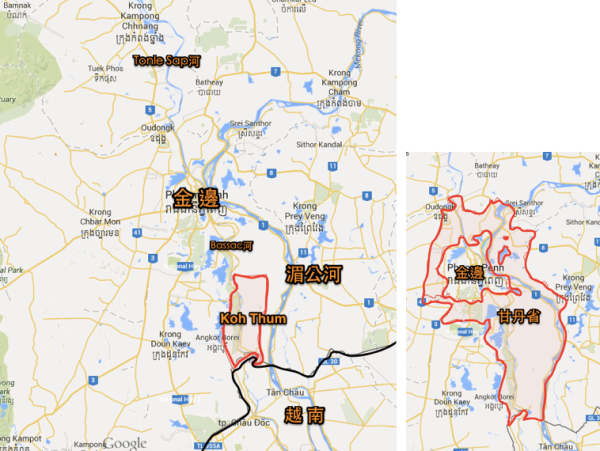
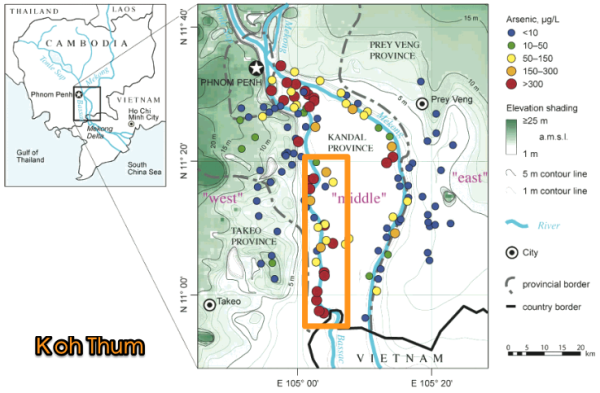
 註1.
註1.